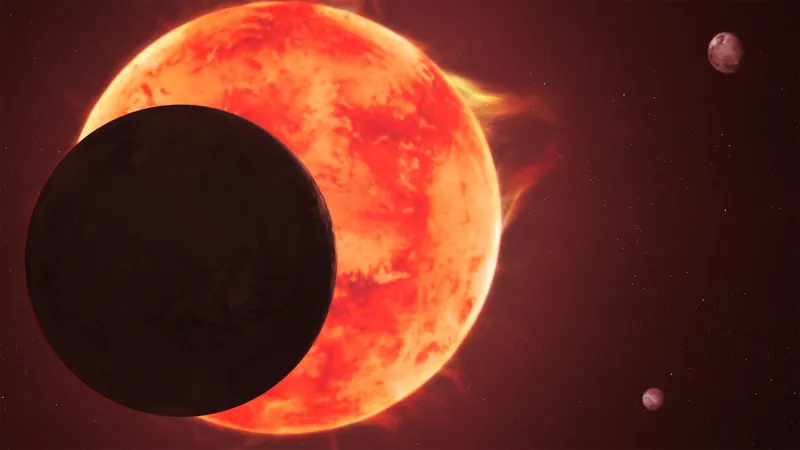
Shocking Revelation: TRAPPIST-1d Disappoints as a Clockwork Earth-Like Planet!
2025-08-14
Author: Kai
TRAPPIST-1d Fails to Deliver Hopes for Habitable Worlds
The hope for discovering habitable planets around the TRAPPIST-1 system has taken a hit! Ground-breaking data from the James Webb Space Telescope (JWST) reveals that TRAPPIST-1d lacks the Earth-like atmosphere scientists were craving.
Despite this setback, don't despair yet! Four other intriguing planets orbiting the TRAPPIST-1 star remain in the hunt for habitability, with several positioned in the "habitable zone"—a crucial area where temperatures could allow for liquid water.
The Atmosphere Mystery Deepens
Previously, JWST had failed to detect an atmosphere around the innermost planets, TRAPPIST-1b and TRAPPIST-1c. Now, the latest findings put TRAPPIST-1d on that unfortunate list.
Caroline Piaulet-Ghorayeb from the University of Chicago succinctly stated, "We can rule out TRAPPIST-1d from a list of potential Earth twins or cousins." Ouch!
How Do We Know?
Through a fascinating technique known as transmission spectroscopy, JWST monitors light absorption by molecules in a planet's atmosphere during transit. Unfortunately, despite using its advanced Near-Infrared Spectrometer, researchers could not find signs of water, methane, or carbon dioxide—key players that fuel Earth’s warmth.
What Went Wrong?
Piaulet-Ghorayeb points out several possibilities for the absence of an atmosphere on TRAPPIST-1d: it could be a barren rock, a Mars-like thin atmosphere, or even a Venus-like planet obscured by high-altitude clouds.
The Menacing Sun of TRAPPIST-1
The system's red dwarf star, often perceived as benign, is a powerhouse of violent outbursts. These flares can strip planets of their atmospheres over time, which could be the grim fate that has befallen TRAPPIST-1b, c, and d.
There's still glimmering hope for finding a suitable atmosphere among the outer planets of TRAPPIST-1. While TRAPPIST-1d is a disappointment, planets e and f are solid candidates, lying comfortably within the habitable zone.
The Ongoing Search for Life
Even if the TRAPPIST-1 system does not yield the results we yearn for, the exploration of our galaxy continues. Red dwarf stars dominate the Milky Way galaxy, and fascinating planets are waiting to be discovered around them, including exciting candidates like Teegarden's Star b and Proxima Centauri b.
The European Space Agency’s upcoming PLATO mission aims to supercharge the search for rocky worlds in habitable zones around sun-like stars—keeping the dream of finding a new Earth alive!



 Brasil (PT)
Brasil (PT)
 Canada (EN)
Canada (EN)
 Chile (ES)
Chile (ES)
 Česko (CS)
Česko (CS)
 대한민국 (KO)
대한민국 (KO)
 España (ES)
España (ES)
 France (FR)
France (FR)
 Hong Kong (EN)
Hong Kong (EN)
 Italia (IT)
Italia (IT)
 日本 (JA)
日本 (JA)
 Magyarország (HU)
Magyarország (HU)
 Norge (NO)
Norge (NO)
 Polska (PL)
Polska (PL)
 Schweiz (DE)
Schweiz (DE)
 Singapore (EN)
Singapore (EN)
 Sverige (SV)
Sverige (SV)
 Suomi (FI)
Suomi (FI)
 Türkiye (TR)
Türkiye (TR)
 الإمارات العربية المتحدة (AR)
الإمارات العربية المتحدة (AR)